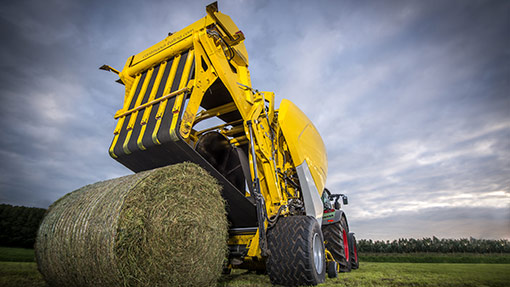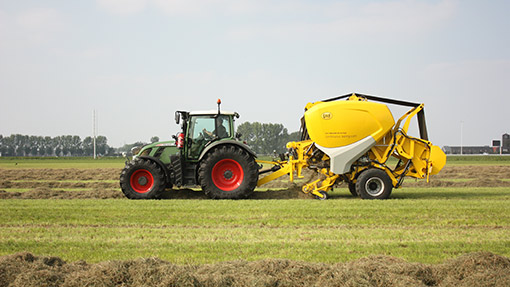Lely unveils speediest baler yet

Squeezing out more straw or silage bales in every hour by avoiding those tedious pauses while the bale strings itself and ejects is a dream of every inventor. Several companies have tried to speed things up over the years, with variable degrees of success.
Current holders of the speedy baling challenge are German company Krone, which claims outputs of 150 bales/hour for its fixed-chamber F125 XC baler. It speeds things along by allowing a reservoir of straw to build up as the previous bale is being ejected, so that the next bale gets a head start.
See also: Krone unveils first non-stop round baler
But Dutch maker Lely reckons it and US partner Vermeer have come up with something radically different. Its patented Lely Welger continuous baling (CB) model is said to be the first one in the world that is genuinely non-stop.

The project started back in 2009 and five prototype machines have been working over the past two years (including one in the UK). In that time some 30,000 bales have been made, so the company believes that it is well tested.
The clever bit is that when a bale reaches full size, it is transferred to the rear of the machine while, at the same time, a new bale is already beginning to form.
How does it work?
Step 1: As the baler moves across the field, a new bale starts to form in the bale chamber. Meanwhile most of the 22m long monobelt – which is designed to handle two bales at a time – is buffered in the belt system at the front of the machine.
Step 2: The bale reaches its full size and is moved towards the tailgate by the bale drum. A tension arm controls the density and net-tying starts. Meanwhile the bale chamber extends by moving the bale and tailgate backwards. At the same time a second bale is forming at the front of the machine.
Step 3: Net-tying is complete. The tailgate opens and drops the bale, all without stopping. The belt system then takes care of the remaining belt and the tailgate returns to the start position. That way, the whole process is seamless.
What are the benefits?
The key thing is output, says Lely. There are no stops or waiting and the company reckons that an output of 110-130 bales is a realistic figure for normal baling conditions.
Also, the continual starting and stopping and general rocking of most current balers makes life less comfortable for drivers and means that more fuel is used too, says the company. “There are no stops and delays,” says Lely boss Alexander van der Lely, “so the driver can concentrate on tracking the swaths accurately.”
The company has also said that it is suspending development on its current big square baler and points out that the high output of the new prototype means there’s no need for a big square baler.
How fast can it go?
A test run at the launch gave a glimpse of what it could do.
Over a modest 4.5ha field it average 17-18kph average speed and produced 44 bales in 22 minutes. That’s a hefty workrate of 170/hour. Average bale weights were 480kph. Horsepower needed is about 170hp.
There is no wrapping facility at the moment – that will come when the baling concept is fully sorted.
When will it be available?
Two to three years, says the company. No price has been mentioned yet.

